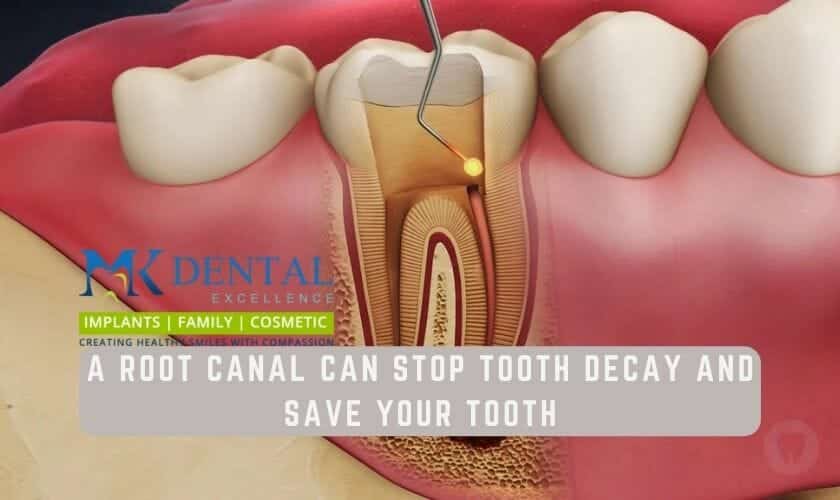
Why Would A Root Canal Be Done In Three Different Stages?
Root Canal Treatment, also known as endodontic therapy, is a standard dental procedure. Root Canal treatments can help save teeth from untimely extraction, allowing them to continue functioning in the mouth. It eventually helps in providing a longer-lasting alternative to artificial replacements. Root Canal treatments require multiple visits, but most patients feel minimal discomfort. The success rate of root canal treatments is more than 90% of cases, making them a practical option for saving teeth in danger of extraction. But have you ever wondered why it’s done in three stages? Here’s everything you need to know about root canal treatment and its primary associated stages.
Important Facts About Root Canal Treatment
You know you need a root canal treatment when a deep cavity affects your tooth’s root. It’s also effective if you have a chipped or cracked tooth. Here are the top facts that you need to know about root canal treatment and are as follows:
- Root canals are not painful- Yes, you heard that right! Most people perceive this misconception and are often found to refrain from getting a root canal treatment. In reality, root canals typically help in resolving discomfort and help you get relief from that constant toothache.
- A root canal treatment will save you from sudden tooth extractions.
- With the help of a root canal, you can protect your surrounding teeth effectively.
Stages Of Root Canal Treatment
Stage 1: Initial Cleaning To Control Bacterial Infection
The initial stage of treatment involves accurately diagnosing your oral health condition. Your dentist will conduct a comprehensive assessment of your tooth to determine the necessary treatment. Then, the area where treatment is necessary will be numbed before cleaning out any bacterial infection from within the root canal with antibacterial solutions and medication applicators for maximum effect. Finally, after all, this has been done, they’ll place a temporary dental filling to seal off your tooth until stage two begins!
Stage 2: Thorough Clean And Medicine
After the initial stage of your treatment, you may need to return for additional cleaning and medication. X-rays are used to ensure that the entire length of your tooth receives treatment. During this subsequent appointment, any lingering bacteria will be eliminated using precise equipment, and antibiotics may be administered.
Stage 3: Filling The Root Canal
After the bacteria has been banished and your symptoms decreased, it’s time to fill that pesky root canal! The process usually happens 4-6 weeks after treatment. After carefully preparing the tooth with a rubber dam and clamp, we fill it using antibacterial solutions. Special rubber points are inserted–either temporarily or permanently, depending on how severe the damage was in the first place. We then heat these out to provide a lasting seal before choosing either a temporary or permanent filling based on further steps required for completion. It helps to ensure that Gutta Percha or amalgams reach all areas of the root canals.
Why Does the Root Canal Treatment Take Three Sessions?
In some cases, certain procedures may require more than one stage to ensure that all infected tissues have been completely removed. This also helps to prevent any chance of reinfection in the future. Initial removal of decay is essential before proceeding with the procedure, as decay cannot be sealed away like healthy tissue. Therefore, it must be eliminated first for everything else to function correctly. If there is any infection present in the vicinity of the procedure, it must also be addressed before commencing the actual process.
A three-stage root canal treatment may be recommended by your dentist for various reasons. Mostly, it depends on how severe or extensive your dental problem is. This multi-stage approach offers several benefits over traditional root canals. It reduces stress on your tooth while giving your dentist more control over each step. It allows you more time between appointments for healing before tackling another treatment area. Ultimately, whether you require a single appointment or multiple ones depends on how severe your dental problem is. So, talk with your dentist about what’s best for you, and they will help guide you through whatever course of action makes sense for getting your smile back in shape!
It depends on the extensive treatment required for each case. Most procedures usually take 1-3 visits spaced over several weeks and months apart.
No! Your dentist will use a local anesthetic during your appointment, so you won’t feel anything throughout your treatment process!
Most dentists recommend getting a crown after the root canal. It reduces the chances of reinfection.





